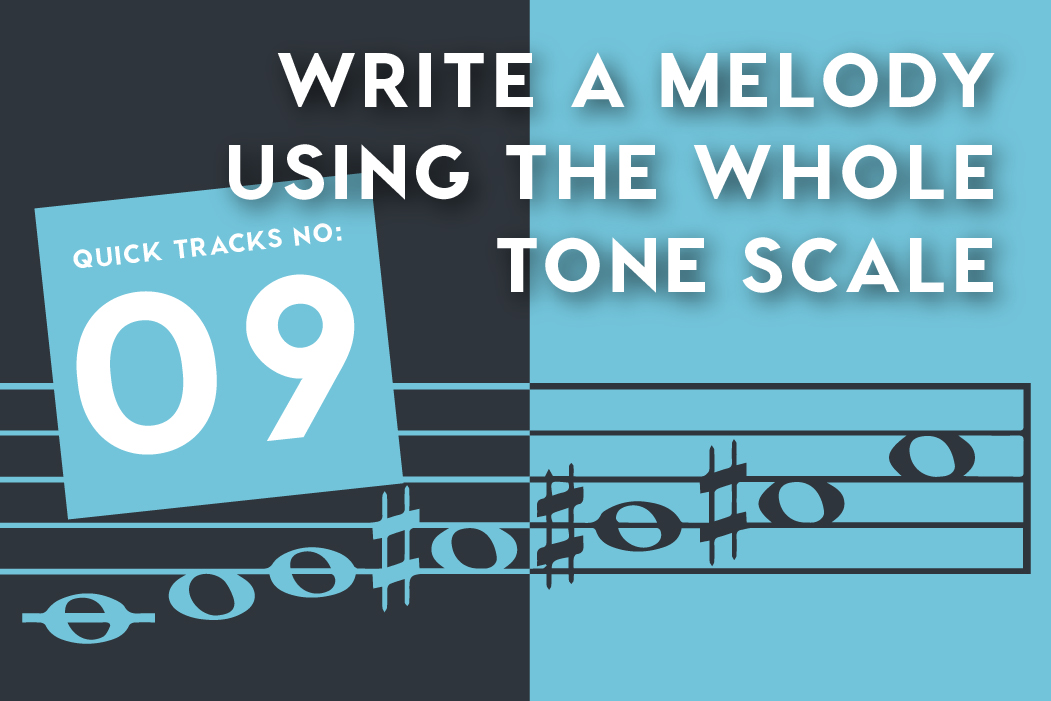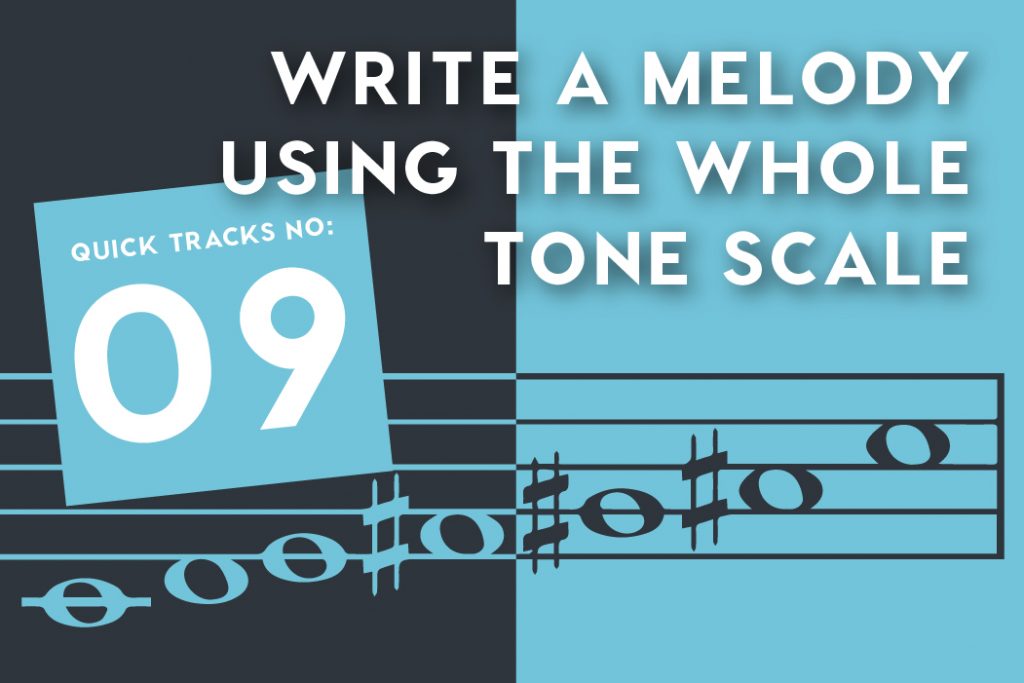
Welcome back to the dance floor, Quick Trackers! Once a month, we hook you up with a short production or songwriting challenge, aimed at helping to up your musicianship. To respond to the challenge, just email us, leave a comment, or post to social media with the hashtag #quicktracks and tag us @learntosoundfly.
Down here at the Soundfly Ranch, we’ve been continually thrilled and legitimately floored each time we receive a response to one of these challenges — they’re only getting better and better! So we decided to up the ante a bit and ask you to do what only few have been able to do with moderate success.
For this week’s edition, we challenge you to write a melody using the whole tone scale! The whole tone scale offers up a very unexpectedly exotic, somewhat slinky, combination of notes. Start, perhaps, by writing something that you could hum in the shower — simplicity is always important when trying to tackle unfamiliar ground — and work out from there!
Extra points if you’re able to turn the melody into a complete or partial song involving multiple voices!
But first, what is the whole tone scale?
It’s not a scale that functions like any traditional major or minor scale, or even any of the more advanced scales. The whole tone scale is made up of exactly what you might think: whole tones! Or, whole steps, for those who are familiar with a different terminology. The whole tone scale is unique in that it only has six notes. If we start on C, and climb up whole steps, we have C, D, E, F#, G# and A#. The scale then repeats itself starting on the higher octave C.
Here’s the whole tone scale starting on C.

This type of scale features a prevalence of augmented chords, or chords that are built using two major third intervals between the three notes of a triad, which in this case would be: C E G# (or, 1 – 3 – #5).
Yet despite the odd flavors created here, the whole tone scale does contain interesting and familiar shades of modal qualities. For example, the A# in the C whole tone scale gives it a dominant quality similar to the Mixolydian scale, while the F# gives us the air of the Lydian mode. (*Hey that’s a previous Quick Tracks edition!)
However, that sharp 5th completely alters our sense of stability, and provides a sound that takes a bit of getting used to. The 5th degree of any scale is known as a balancing note, one that establishes the power of the root through consonant reinforcement. Most of us are familiar with the sound of a flattened 5th from hearing and internalizing blues music in all its forms and influence throughout history, but the sharp 5th needs to be treated a bit differently in order to work in a broad musical context.
Thus, it provides a worthy compositional challenge! Good luck with this one, feel free to submit a written chart, or an audio or video file, to help us explore the strange melodic movements of this scale with your track.
Some helpful examples
One of the most explicit employments of the whole tone scale is in the title track to Wayne Shorter’s album Juju. The album is a testament to the modal exploration of John Coltrane, but through Wayne Shorter’s own heightened compositional lens, and is a fantastic learning experience.
“You Are the Sunshine of My Life” by Stevie Wonder employs the whole tone scale and augmented chords in its introduction. For you prog rockers out there, Dream Theater’s “Overture 1928” uses elements of the whole tone scale over a heavy groove. And for those who are inclined to reharmonize classics, jazz guitarist John Scofield’s cover of Hank Williams’ “I’m So Lonesome I Could Cry” is an incredible demonstration of improvising using the whole tone scale.
Frank Zappa uses the whole tone scale in a brief but incredibly cool moment during his solo in his song “Outside Now” from his album Broadway the Hard Way. The whole song is worth a listen, but if you are looking specifically for the whole tone scale, skip to 4:18.
What might you come up with? Let us know!
Get 1:1 coaching on your music from a seasoned pro.
Soundfly’s community of mentors can help you set the right goals, pave the right path toward success, and stick to schedules and routines that you develop together, so you improve every step of the way. Tell us what you’re working on, and we’ll find the right mentor for you!




